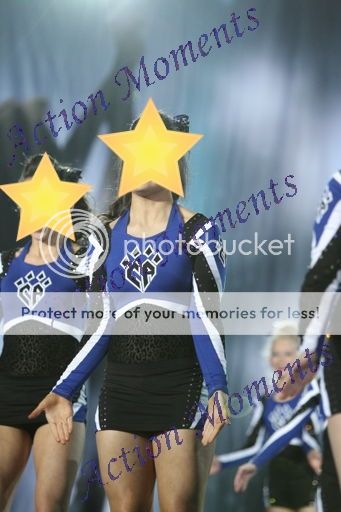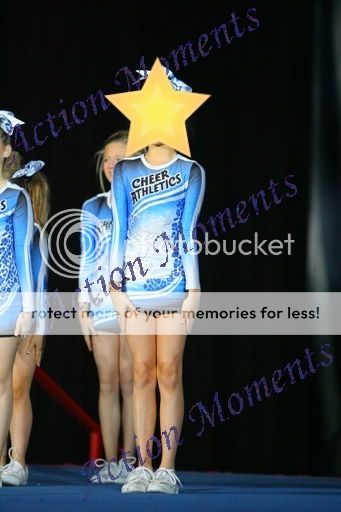Navigation
Install the app
How to install the app on iOS
Follow along with the video below to see how to install our site as a web app on your home screen.

Note: this_feature_currently_requires_accessing_site_using_safari
More options
You are using an out of date browser. It may not display this or other websites correctly.
You should upgrade or use an alternative browser.
You should upgrade or use an alternative browser.
All-Star Cheer Athletics (questions/rumors)
- Thread starter BlueCat
- Start date
-
- Tags
- cheer athletics
- Jul 30, 2012
- 41
- 22
what team is the junior uniform? it looks like lynx which is my old team haha weird
- Apr 26, 2013
- 39
- 19
what team is the junior uniform? it looks like lynx which is my old team haha weird
Its the junior program uniform, every junior team used this uniform Bearkatz, Katz, snow leopards, lynx, bengals, thundercats and jags
ETA: now that I re-read your post I get it haha my bad idk what team is in the picture lol sorry
The Fierce Board App! || iPhone || Android || Upgrade Your Account!
cheysmomager
Cheer Parent
- Mar 2, 2011
- 786
- 1,051
I can only PRAY we go to these too!! This is BEAUTIFUL!! But CP is on a Sr level.......keeping fingers crossed!!
The Fierce Board App! || iPhone An Apple a Day Keeps the Android Away
GiaBellaMom
Cheer Parent
- Feb 25, 2013
- 462
- 843
So - is the Jr uniform tucked INTO the skort or one piece? I can't tell...just curious...it's darling....I have not even broken it to my cp's that there will be no crop top - and they don't even spray tan! hahaI'm kind of hoping youth goes to that uniform also...I love it so much more than the subliminated youth one. Cp was upset when she realized she wasn't going to have a crop top anymore...her response "well what am I going to spray tan? Just my legs??"
BlueCat
Roses are red, cats are blue
- Dec 14, 2009
- 4,503
- 19,507
- Thread starter
- #1,253
I've heard there is a "shadow" system where certain athletes compete for spots at each competition. Is this true? If so, for all teams? Is it possible that some kids could practice all year and never compete?
We do have "alternates" or shadows on occasion, but most teams do not have them. (It is mostly the older, higher level teams. Wildcats is the team most likely to have more athletes on the roster than can take the floor.) I can only think of once or twice where a healthy athlete didn't compete at all during the season. Typically, if it look like an athlete will not get an opportunity take the floor, they are offered a spot on a different team where they will be much more likely to actually compete. Sometimes those athletes choose to remain on their original team instead of switching teams or cross-competing.
BlueCat
Roses are red, cats are blue
- Dec 14, 2009
- 4,503
- 19,507
- Thread starter
- #1,254
BlueCat, I didn't see you listed in the all-star coaches section on the CA site. Are you coaching any teams this season?
I am not officially coaching any teams this season, but I intend to be out at practices as often as possible. Brad and Angela are coaching fewer teams this year as well. For better or worse, there are many occasions where one of the owners has to be somewhere other than on the floor coaching. (example: visiting the Austin gym) Having a company with 60+ employees is a full-time job in an of itself and sometimes you simply can't be in every place at once.
Fortunately, we have some absolutely amazing new coaches who are more than capable of stepping in. All of the teams I coached last year are in great hands this season.
- Jan 28, 2013
- 12
- 2
Since (almost) all of your teams names are cat related, what made y'all chose coral? just curious 

- Mar 8, 2012
- 196
- 193
If I'm not mistaken I think it's supposed to be Coral Cats ? Coral is a type of gem/precious stone.. I assume it was just a typo.Since (almost) all of your teams names are cat related, what made y'all chose coral? just curious
- Jan 28, 2013
- 12
- 2
If I'm not mistaken I think it's supposed to be Coral Cats ? Coral is a type of gem/precious stone.. I assume it was just a typo.
ahhh, that makes sense! thanks!

anythingforcheer
Cheer Parent
- Feb 25, 2010
- 323
- 187
@Bluecat, how do you handle a situation when you have flyers that are elite at their particular levels, but not necessarily tumblers. I understand you try and create well rounded athletes, however, there will always be the small percentage that may not have all of the required skills for that level.
BlueCat
Roses are red, cats are blue
- Dec 14, 2009
- 4,503
- 19,507
- Thread starter
- #1,259
@Bluecat, how do you handle a situation when you have flyers that are elite at their particular levels, but not necessarily tumblers. I understand you try and create well rounded athletes, however, there will always be the small percentage that may not have all of the required skills for that level.
We put athletes on teams because they will make the team better, not necessarily because they are elite at every skill. (Analogy - the kicker on a football team usually isn't nearly as big as the linemen nor as fast as the cornerbacks.)
The flip side of that, however, is that if you need 3 flyers and you have 4 athletes trying out for that spot, 3 of which have double fulls and the other cannot do a standing back, that 4th athlete would need to be significantly better at flying for it to be worth it to sacrifice the spot to someone who has doesn't have the skills needed in other parts of the routine. Complicating this is the fact that many parents grossly overestimate how "unique" their child's abilities are. They may feel that their child is a dramatically better flyer than girls X, Y, & Z, when that may not necessarily be true.
Also, being tiny is a major advantage to being a flyer. Fair or not, physics simply doesn't care. Size is certainly not the only factor, but anyone that says it isn't one of the main factors is simply not stating the truth. Girls who are tiny for their age at 12-13-14 are typically smaller than older girls - even if those girls are still small for their age and not "big" by normal human standards. Flyers who are used to getting by on being tiny can lose that advantage as they grow normally. If those girls don't learn to base or back spot ("find a foot"), they may find themselves having difficulty making the roster they want. What got them added to that team in the first place can be the very thing that knocks them out a few years later when another tiny 12-13 year-old (what they were 2-3 years ago) gets moved to the team to fly.
You can argue all day long about whether that is fair or whether it SHOULD be that way. The simple fact is that it IS that way. The push for elite teams to have more and more difficult stunts means that "normal" sized flyers are becoming rarer by the season.
One benefit to getting taller - you become a much better back spot. Being tall (more specifically - having a higher reach) is to back spotting what being tiny is to flying. Physics works to your advantage. Fortunately, there is a spot in a stunt group for nearly any body type.
GreenStormLucy
Cheer Parent
- Sep 11, 2012
- 1,459
- 2,432
We put athletes on teams because they will make the team better, not necessarily because they are elite at every skill. (Analogy - the kicker on a football team usually isn't nearly as big as the linemen nor as fast as the cornerbacks.)
The flip side of that, however, is that if you need 3 flyers and you have 4 athletes trying out for that spot, 3 of which have double fulls and the other cannot do a standing back, that 4th athlete would need to be significantly better at flying for it to be worth it to sacrifice the spot to someone who has doesn't have the skills needed in other parts of the routine. Complicating this is the fact that many parents grossly overestimate how "unique" their child's abilities are. They may feel that their child is a dramatically better flyer than girls X, Y, & Z, when that may not necessarily be true.
Also, being tiny is a major advantage to being a flyer. Fair or not, physics simply doesn't care. Size is certainly not the only factor, but anyone that says it isn't one of the main factors is simply not stating the truth. Girls who are tiny for their age at 12-13-14 are typically smaller than older girls - even if those girls are still small for their age and not "big" by normal human standards. Flyers who are used to getting by on being tiny can lose that advantage as they grow normally. If those girls don't learn to base or back spot ("find a foot"), they may find themselves having difficulty making the roster they want. What got them added to that team in the first place can be the very thing that knocks them out a few years later when another tiny 12-13 year-old (what they were 2-3 years ago) gets moved to the team to fly.
You can argue all day long about whether that is fair or whether it SHOULD be that way. The simple fact is that it IS that way. The push for elite teams to have more and more difficult stunts means that "normal" sized flyers are becoming rarer by the season.
One benefit to getting taller - you become a much better back spot. Being tall (more specifically - having a higher reach) is to back spotting what being tiny is to flying. Physics works to your advantage. Fortunately, there is a spot in a stunt group for nearly any body type.
True words. I really like how honestly you answer all the questions here.
A good stunt group can almost put up any girl in an extension or lib with a little practise.
But performing all these elite stunt skills that you need to stand out and win titles year after year needs the tiny ones.
Still something many people are unhappy about.
And something that can be hard to tell an athlete who has flown "forever" and will be replaced by a equally talented but tiny flyer next season.
The Fierce Board App! || iPhone || Android || Upgrade Your Account!
Who is excited for UCA College Nationals?
Who is excited for UCA College Nationals? What teams are you rooting for?
Daughter just got taken out of flyer spot
Hi Cheer world! I need help with this...
The death of the Large Divisions
I think it's so sad that there are only two teams left in Large Coed. Do you think Steel, Cali...
Strong starts
What gyms and team do you think are having a strong start/ standing out early? Woodlands Elite...
Similar threads
- Replies
- 0
- Views
- 537
- Replies
- 0
- Views
- 958
- Replies
- 0
- Views
- 1K
- Replies
- 0
- Views
- 2K

